Celebrating World Oceans Day with a Marine World exhibition
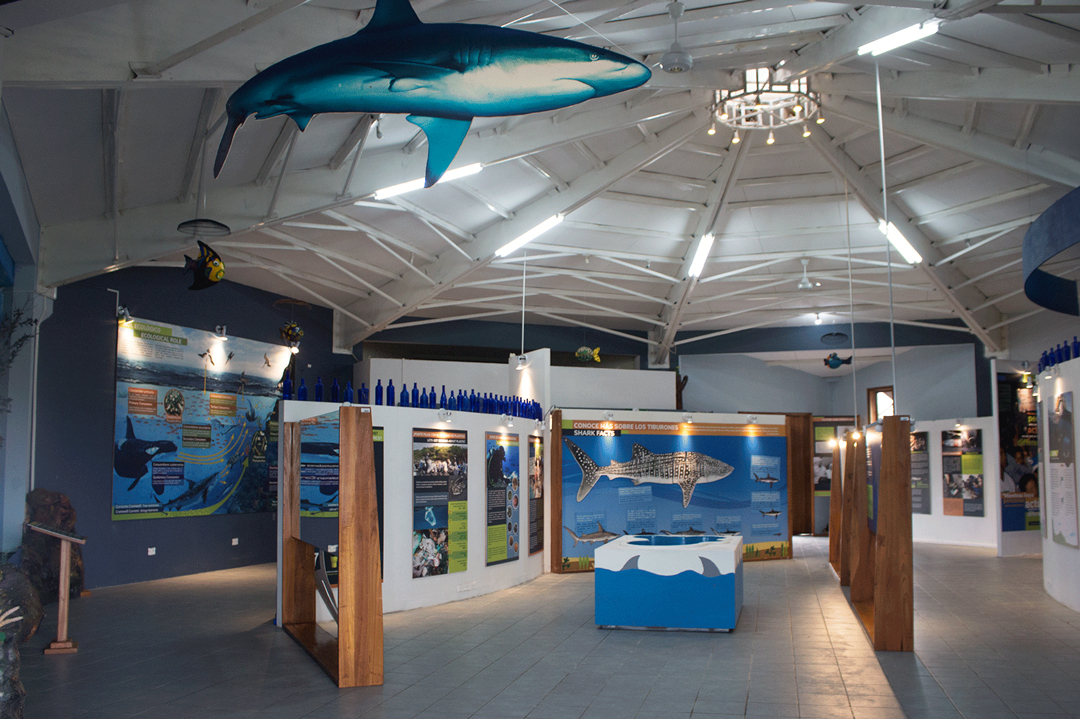
The Marine World exhibition in the Van Straelen Interpretation Center at the Charles Darwin Research Station. Photo © Daniela Vilema
After 18 years, an exhibition with the theme ‘Marine World’ has been re-opened in the Van Straelen Interpretation Center at the Charles Darwin Research Station. Thanks to the support of the Save Our Seas Foundation, we were able to paint the walls, design new information panels, make artefacts from various materials and redesign the floor space so that we could carry out our Shark Ambassadors Programme and other educational activities with the local community. World Oceans Day, 8 June, was the date chosen to open this new space. Local authority representatives, students and Charles Darwin Foundation (CDF) staff members joined us to launch the new exhibition, while local young musicians performed at the opening.
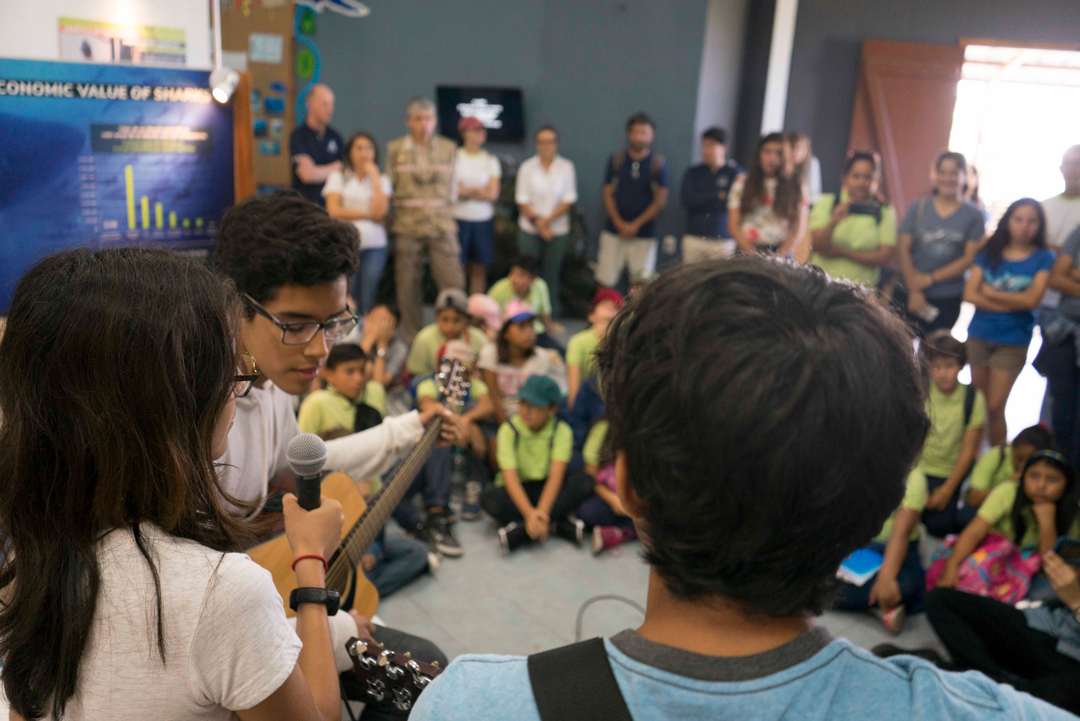
Local schools and representatives of the local authority were present at the launch of the Marine World exhibition at the Charles Darwin Research Station. Photo © Jesús González
Back in 2016 we launched the ‘Protect the Fins and the Ocean Wins’ campaign with the aim of promoting the Galápagos as a location where humans and sharks can co-exist sustainably. Over the course of the campaign we worked with more than 1500 kids and during the workshops we held for them they filled in questionnaires to indicate what they wanted to learn about sharks and to help us evaluate their perceptions of these marine predators.
This new exhibition answers the students’ questions, providing information about a number of topics, from prehistoric and deep-sea sharks, mangroves as a nursery for juvenile sharks, the ecological role of sharks and shark anatomy and senses to threats that hinder the conservation of sharks and the scientific methods used in the Galápagos to study sharks. In an additional space we raise awareness about how plastic is polluting the oceans and suggest how humans can change their behaviour with regard to this global issue.
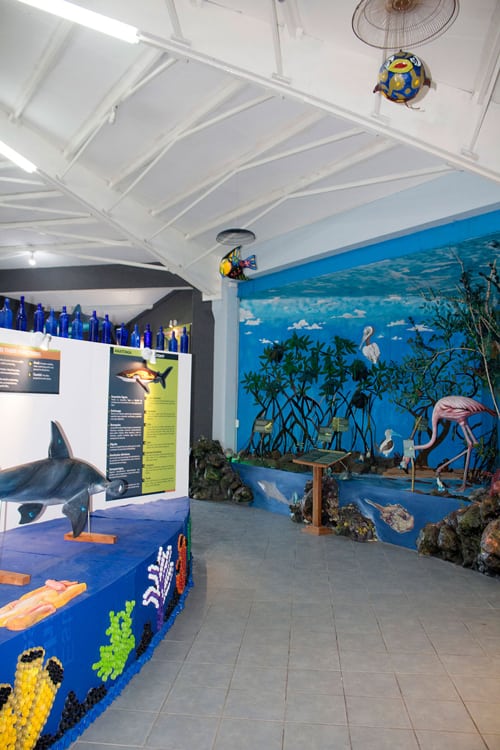
On the left is the section describing the anatomy and senses of sharks, while on the right a mural illustrates how mangroves serve as a nursery area for juvenile sharks. Photo © Daniela Vilema
As part of our Marine Education Project in 2017, we developed the Shark Ambassadors Programme, which uses experience as a tool to learn more about sharks and marine ecosystems. The programme included beach clean-ups, during which we collected marine debris that we have re-used in the exhibition. In the first half of 2018, eight Shark Ambassadors helped to paint the exhibition’s murals. Using plastic caps found in beach clean-ups, they decorated the bulletin board and the shark anatomy section.
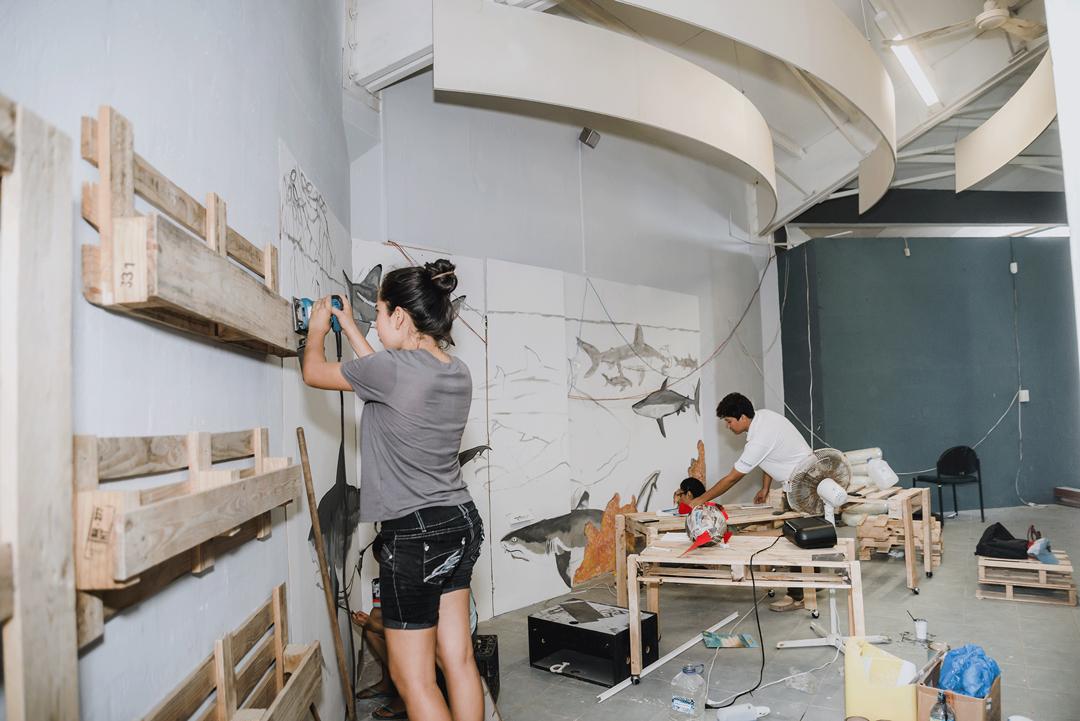
Jonathan Atiencia, a local volunteer, and shark ambassadors paint a shark mural and arrange the furniture in the marine library. Photo © Joshua Vela
Volunteers painted a mural that depicts the shark species most often seen in the Galápagos and provides a marine background to our reading corner and classroom. Recycled wood pallets have been turned into furniture, while glass bottles collected from the recycling centre on Santa Cruz Island add a blue decorative element. The Galápagos National Park donated furniture that was very useful for educational activities and to display panels. Thanks to additional funds and the support of CDF staff, old cables have been replaced, panels have been put in place and we have a new fence and a ramp that provides access for those with physical disabilities.
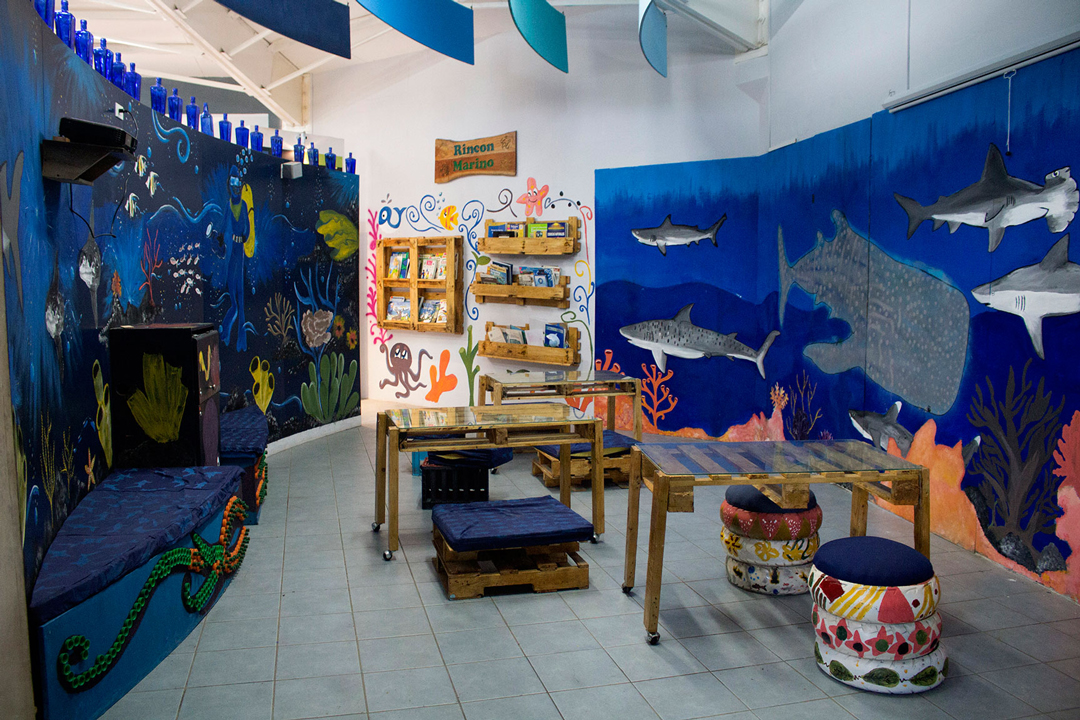
The mural painted by local volunteers forms a background to the classroom and the children’s reading corner. Photo © Daniela Vilema
The day after the exhibition’s launch, the Charles Darwin Research Station Open House took place, welcoming more than 500 tourists and people from the local community. On this occasion, we used the new exhibition to explain how vulnerable sharks are and to demonstrate the scientific methods used to study sharks in the Galápagos. Our shark characters accompanied us, conveying key information to visitors.
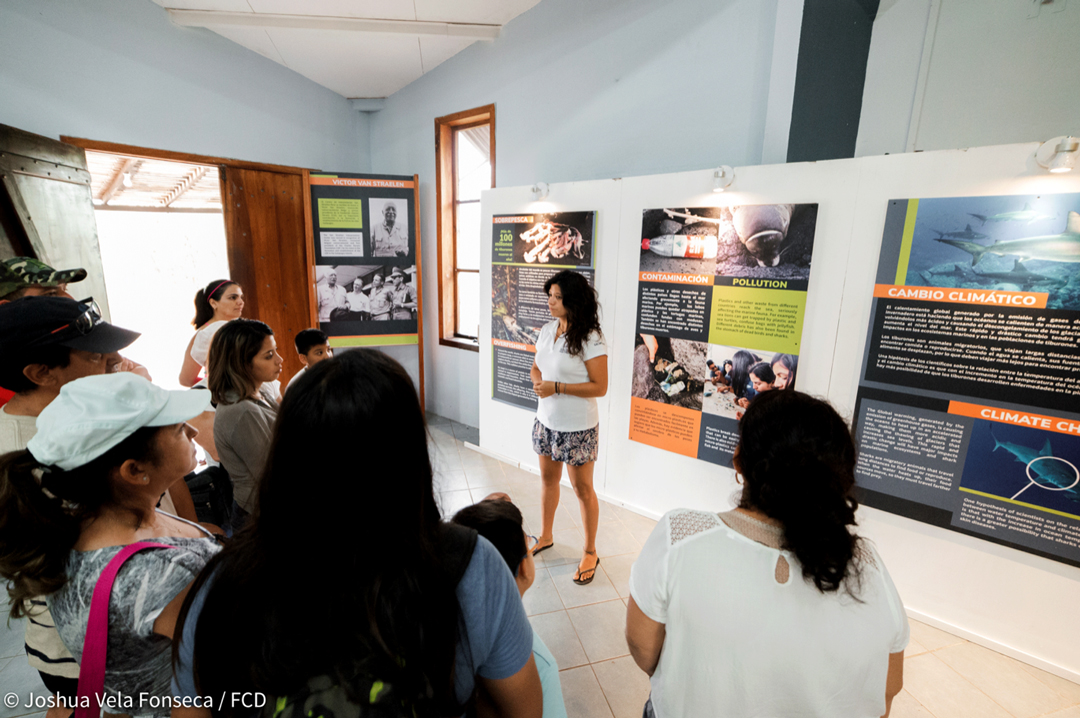
Daniela Vilema explains the threats that make sharks so vulnerable. Photo © Joshua Vela
For the rest of the year we have prepared various activities for students, including the continuation of the Shark Ambassadors Programme and a new Marine Mornings Programme for local teachers and students. We will use art as a tool to teach about marine conservation and field activities for students to learn more about this beautiful archipelago. The Interpretation Center has been renewed to become a space to develop activities and also to receive groups that want to learn more about oceans.
Special thanks go to our donors, the Galápagos National Park and our partners who made this exhibition possible!
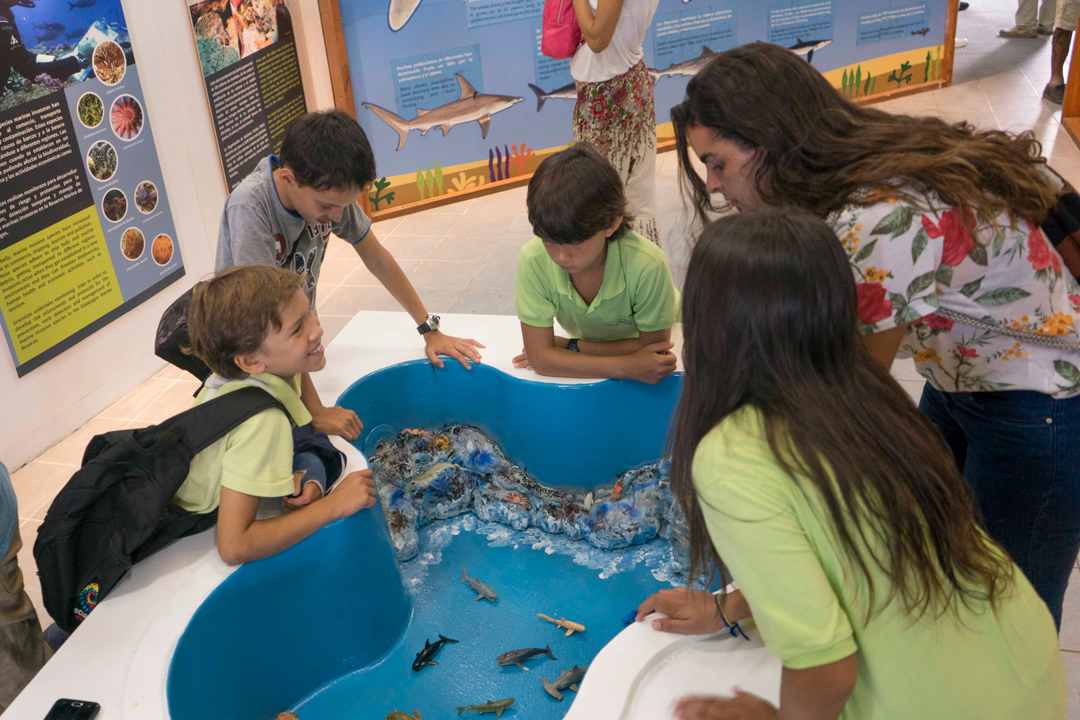
Students from Tomas de Berlanga school visited the new exhibition on World Oceans Day. Photo © Jesús González
